“We are not the only animal that mourns; apes do, and elephants, and dogs. Yet we are the only one that tortures.”
Geraldine Brooks
The 12th of August, 2012 was the inaugural World Elephant Day, and 9 years later it is celebrated all over the world by many wildlife organizations and individuals in different countries. This day is dedicated to the conservation and safety of Earth’s largest land animal, the elephant increasing public awareness of the plight of elephants, and bringing forth positive solutions to this problem.
There are two main species of elephants, the African elephant, and the Asian elephant. As their names indicate, the African savannah elephant can be found in the savannahs of sub-Saharan Africa, while the African forest elephant lives in the rainforests of Central and West Africa. Some are also found in the Sahel Desert of Mali in the northern area. The Asian elephant inhabits the forests and grasslands of South and Southeast Asia. This year marked a new beginning for African elephants because for the first time the savannah elephants and forest elephants were considered as two different species by the International Union for Conservation of Nature.
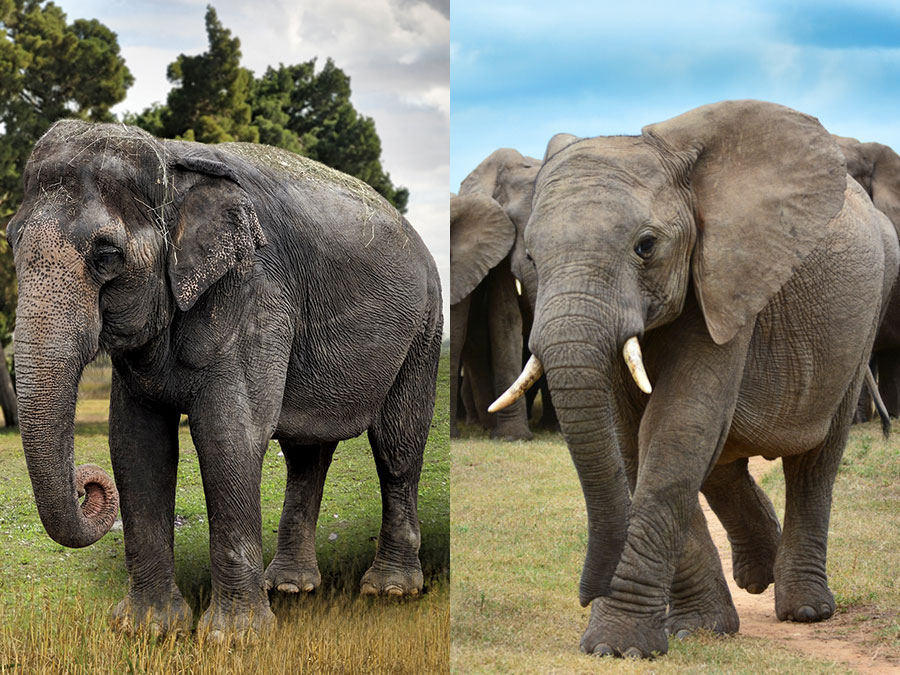
These two species have unique characteristics. Interestingly, the African elephant has ears shaped like the African continent, while the ears of the Asian elephant resemble the Indian subcontinent. In terms of size, the African elephant takes the first spot. They also can be identified using their trunk. The African elephant has two fingers at the tip of its trunk, while the Asian elephant only has one. Elephants have very thick skin, the folds and wrinkles can store water which helps them cool down. They also take regular dust and mud baths to keep their skin clear and protect themselves from sunburn.
But in my opinion, the most special characteristic of an elephant is its large and dense temporal lobe. It is the largest of all land animals. Because of the mammoth size of this lobe of the brain associated with memory, elephants rarely forget. Their impressive memories help them remember distant watering holes, other elephants, and humans even after many years have passed.
“Are we happy to suppose that our grandchildren may never be able to see an elephant except in a picture book?”
David Attenborough
In the future, we will only be able to witness the attributes of these magnificent creatures in books. This possibility is soon becoming a reality because the number of elephants of both species has drastically reduced over the recent years.
Currently, in Africa, the savannah elephants are classified as endangered and the forest elephants as critically endangered. There are only 415,000 of them remaining. This is how far the numbers have fallen from an original amount of 26 million, which was the number of elephants before Europe colonized Africa. The Asian elephants are classified as endangered, with only about 20,000 to 40,000 elephants, which means they are in even more danger, especially if the numbers do not increase.
The sole reason for the dwindling numbers is anthropogenic activities. Illegal poaching is one cruel activity that results in the loss of elephants. The insatiable demand for ivory is the biggest threat to African elephants but, Asian elephants also face this threat. The male elephants or the ‘bulls’ are usually under attack for their tusks but the increase in demand for meat, leather, and body parts has led to the killing of both males and females alike.

One of the most heartbreaking deaths due to illegal poaching was that of Kenya’s largest African elephant Satao. He was killed by poison arrows shot by poachers and he was found with his tusks cut off and his face was severely mutilated. This is just one of the many deaths due to poaching. We must remember that ivory belongs only to elephants.
Both African and Asian elephants are in danger due to habitat loss and fragmentation. Deforestation and agriculture have led to more human settlements taking over the areas that elephants used to inhabit. This has led to the inability of elephants to follow their traditional migration routes which makes it difficult for them to reach water and feeding grounds. The fragmentation of habitats also causes the elephants to become isolated, therefore breeding becomes challenging and poaching becomes easier.
When humans take over the elephants’ habitat, it brings them near the pachyderms, leading to human-elephant conflicts. This was a widely spoken-about topic in our country as well. The conflicts occur due to the elephants’ need for space and also because it destroys crops and properties close to their forest habitats. This destruction causes economic losses and therefore the people retaliate, resulting in human and elephant casualties.
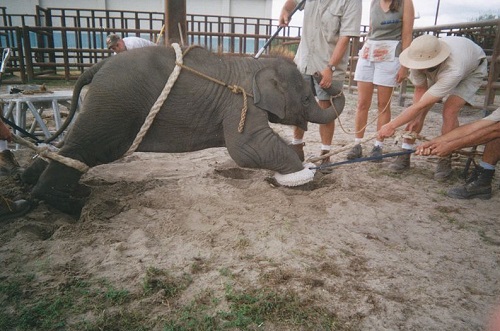
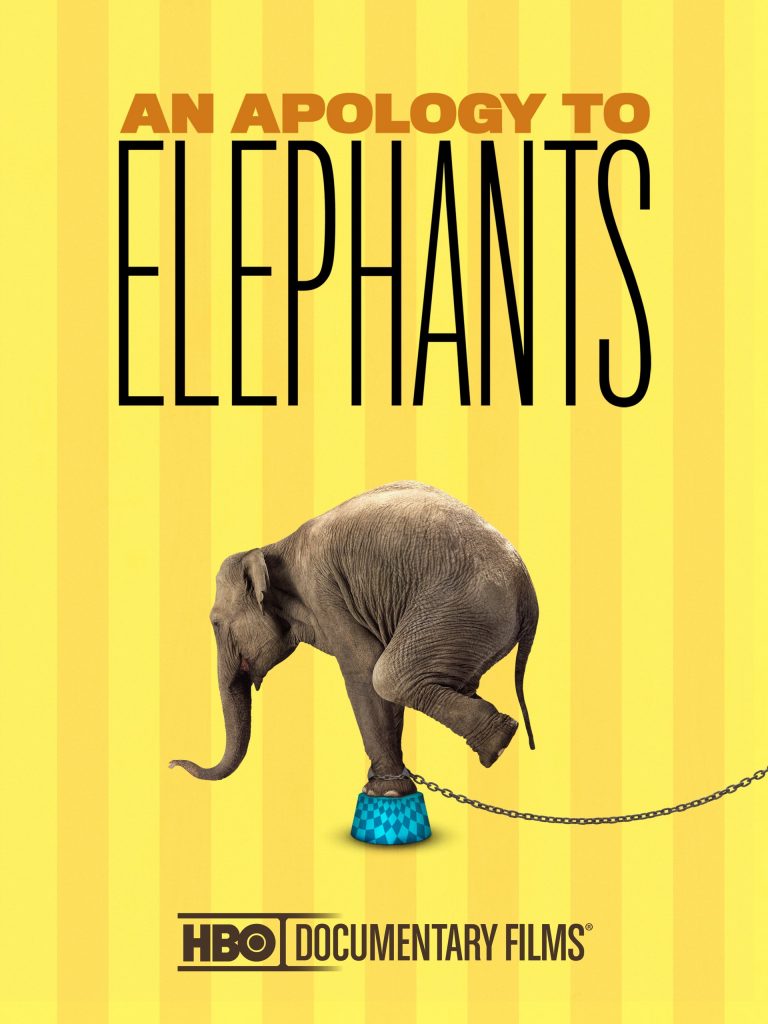
Another barbaric activity by humans is the mistreatment of elephants in captivity. This occurs frequently in zoos, circuses, and even in the tourism industry. ‘An Apology to Elephants’ is a documentary released in 2013 exploring the brutal abuse the elephants have to undergo in captivity. It highlights the psychological trauma and physical injuries the elephants have to suffer. The saddest part of it all is that most elephants that are trafficked for the tourism trade are young wild elephants. In the process of separating the young from their mother, the mothers are killed and the young are traumatized.
One activity in Sri Lanka that is shortening the life span of the elephants is the illegal dumping of garbage close to wildlife sanctuaries. These national treasures, who once foraged in the jungles have been reduced to eating rubbish and emanating a foul odor. The elephants also become sick since they swallow the plastic and polythene which is found among the solid waste.

All of these human activities are leading to the extinction of these fascinating mammals. Although extinction is part of life on Earth, humans are accelerating the speed at which extinction is occurring and that is creating a negative impact on this planet.
Especially since elephants are a keystone species. They play a crucial role in the ecosystem and therefore without them, the ecosystem will cease to exist. They are also called ecosystem engineers as they help to form their habitat in many ways. During the dry season, they dig up dry riverbeds using their tusks and create new watering holes for animals to drink from. They clear trees, shrubs, and saplings using them as food, allowing smaller animals like zebras in the savannah to prosper. Therefore, elephants are also given the name, ‘gardeners of the forest’. Elephants’ dung is also advantageous because it contains seeds, which allows new plants to grow where the dung has dropped and it is a great habitat for dung beetles too.
Since elephants are critical to the planet, it is our responsibility to conserve them. There are steps already taken to protect the elephants by scientists, conservationists, and rangers. One step is the creation of wildlife corridors that allow the safe migration of elephants. Another step was taken to reduce the human-elephant conflict by using bee walls to harmlessly keep the elephants out since elephants are afraid of bees. Elephants are also regularly inspected and they are fitted with GPS collars so that their whereabouts can be constantly tracked. In our country, the government has enforced a ban on plastics and has prohibited the open dumping of waste near sanctuaries. All that has to be done is successful enforcing of these laws.
All those who have studied elephants have spread the message of conservation and it has reached the public ear. Therefore, it is also up to us to stand up, speak out, and take action against the destruction of the majestic elephants. Some actions that we can take include supporting the ban on the ivory trade, choosing ecotourism which provides ethical tours, buying elephant-friendly honey made using the bee wall, buying elephant-friendly coffee and tea made from plantations that are not products of deforestation and habitat loss.

Supporting elephant sanctuaries and orphanages where young and old elephants are kept safe in their natural habitats. Volunteer at conservation societies like our very own Sri Lanka Conservation Society (SLWCS). You can even adopt an orphan baby elephant that has been kept safe and help it return to the wild. Supporting the research on elephants in captivity and the wild can greatly improve their living conditions. Also spreading the message of support is one of the top ways of saving elephants or any other animal in danger of extinction.
Finally, a message to all those who love posting pictures when on a tour. If you are fortunate enough to go on an ethical tour, do not geotag your photos. Poachers use it as a means of finding the location of animals like elephants and hunting them down.
Conserving the creations that we have co-existed with for many years should be a top priority. Because when we save the elephants, then we save the forest – and then we save ourselves.
Written By:
Amrah Izadeen
1st Year Undergraduate,
Faculty of Science,
University of Colombo.
Reference:
- National Geographic. (2020). Watch: Elephants 101. Animals. https://www.nationalgeographic.com/animals/mammals/facts/asian-elephant
- National Gepgraphics. (2020). Watch: Elephants 101. Animals. https://www.nationalgeographic.com/animals/mammals/facts/african-elephant
- C. (2019, November 19). Top 10 facts about elephants. WWF. https://www.wwf.org.uk/learn/fascinating-facts/elephants
- Binns, S. (n.d.). Human-Elephant Conflict, Sri Lanka. International Elephant Foundation. Retrieved August 14, 2021, from https://elephantconservation.org/human-elephant-conflict-sri-lanka/
- Staff, S. X. (2018, May 17). Sri Lanka elephants face plastic danger foraging dumps for food. Science X. https://phys.org/news/2018-05-sri-lanka-elephants-plastic-danger.html
- Morfeld, K. (2020, June 3). 10 ways you can save the elephants – Blog. For Elephants. https://www.4elephants.org/blog/article/10-ways-you-can-save-the-elephants
- An Apology to Elephants Trailer. (n.d.). HBO. Retrieved August 14, 2021, from https://www.hbo.com/documentaries/an-apology-to-elephants
Image Courtesy:
- Title Image: https://bit.ly/3AGWMXT
- 1st Content Image: https://bit.ly/3xLfUSI
- 2nd Content Image: https://bit.ly/3iKPSuL
- 3rd Content Image: https://bit.ly/2VSaDfa
- 4th Content Image: https://bit.ly/3yLgEZy
- 5th Content Image: https://bit.ly/3yQ55QH
- 6th Content Image: https://bit.ly/3g5i8X5
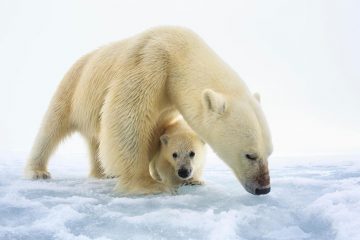

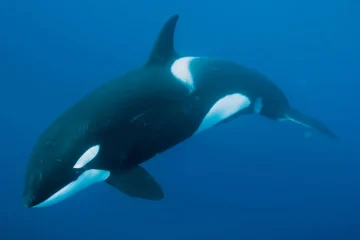
0 Comments